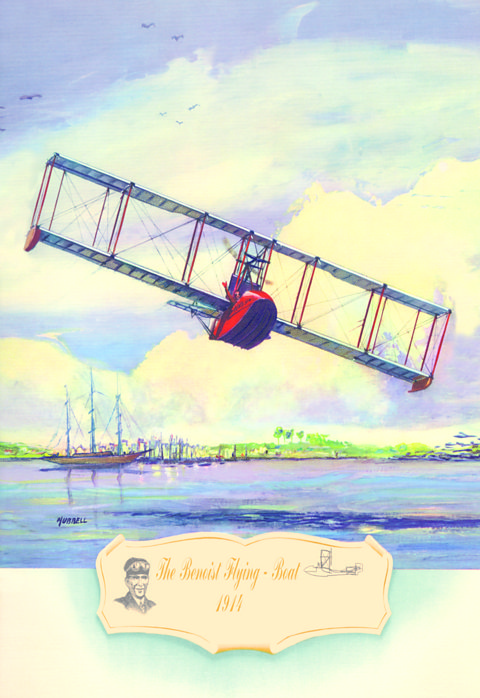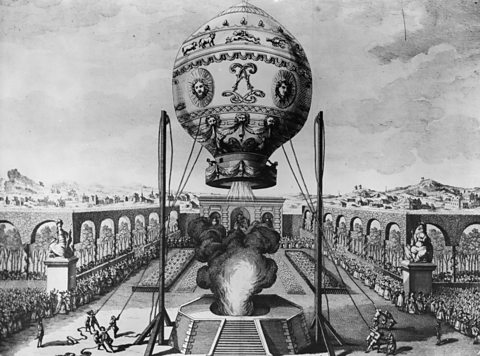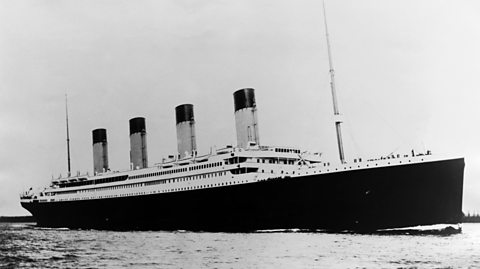When it comes to modes of transport, we're spoiled for choice these days.
But even just a couple of centuries ago, those options were somewhat limited. As technology improved, newer planes, trains and automobiles helped us get from A to B - with the transport of the 18th and 19th Centuries shaping the ways in which we travel today.
But whatever mode of transport you choose for your next trip, it’s unlikely that you’ll be heading out on a boat or aircraft for its first ever voyage. Â鶹Éç Bitesize looks at some iconic maiden journeys in history.
Orient Express
If you think of travelling in style, the Orient Express immediately comes to mind.
Departing for its first official journey from Paris to Istanbul on 4 October 1883, the train was kitted out in the style of some of Europe’s most decadent hotels.

With leather armchairs, intricate wooden panelling and silk sheets for the beds, this was no ordinary train. The Orient Express had been a plan in the making for almost 30 years.
The Belgian Georges Nagelmakers, who had trained as a civil engineer, dreamed of a train that would span a continent and, inspired by his experience of sleeper trains in the United States, set out to replicate it in Europe.
The newspapers gave the plans the iconic Orient Express name - orient meaning the east in French. This referred to the direction of travel from Paris to Istanbul. Nagelmakers saw the potential in the name and embraced it. Indeed, his marketing skills were in full show for the maiden 80-hour journey, as he arranged for shoddy, worn carriages to be alongside the train as it left Paris, in order to make the Orient Express look even more grand.

The Lark of Duluth
These days, we’re spoiled for choice when it comes to domestic and international flights – but just over 100 years ago, in a period known for its aircraft innovation as the Golden Age of Aviation, there was just one commercial route in operation.
In 1 January 1914, the Lark of Duluth, a wooden biplane (meaning it had two sets of wings) flying boat, set off from St. Petersburg in Florida to nearby Tampa.
The St. Petersburg-Tampa Airboat Line became the first ever commercial flight operator, taking passengers on the 23-mile, 23-minute journey.
Just one passenger took to the skies for the maiden flight, the former mayor of St. Petersburg, Abram C. Pheill, who paid for the privilege at an auction.
The route only operated for four months, but carried just over 1,200 passengers. The fare was $5 each way - around $130 or £94 at today’s prices.

The Montgolfier Brothers’ Balloon
However you plan to travel on your next holiday, chances are that you won’t take to the skies in a hot-air balloon.
But more than 200 years ago, ballooning was the very first method of human flight technology.

French brothers Joseph-Michel and Jacques-Étienne Montgolfier designed a balloon in 1783, successfully achieving unmanned flights, or flights with animals.
Plans were made for a manned flight – with French King XVI planning on putting two condemned criminals on board, in case of any mishap.
However, science teacher Jean-Francois Pilatre de Rozier, along with Marquis François d’Arlandes, argued that being on the first flight should be considered an honour, rather than a punishment, and they were given permission to fly.
On 21 November 1783, the pair took off from the royal grounds of the Bois de Boulogne, now a public park in Paris, for a 25 minute flight, before landing in the suburbs of the city.
That original flight went just 5.5 miles, and ballooning has come a long way since then. In 1999, the first successful circumnavigation of the globe, by Bertrand Piccard and Brian Jones, took place in a balloon based on de Rozier’s subsequent modifications of the original design.
Titanic
There’s probably no more famous first journey than that of the Titanic - a ship that sadly did not complete its maiden voyage.
At the time of its departure in April 1912, the Titanic was the largest ship afloat anywhere in the world. It left Southampton for New York, via Cherbourg in France and Cobh, then known as Queenstown, in Ireland.
While its collision with an iceberg is well known, what’s less commonly mentioned is that the Titanic almost crashed while leaving Southampton.

The ship passed two moored liners and the huge water displacement it produced caused one of them to come loose from the dock and swing towards the Titanic – they missed each other by a matter of feet.
More than 1,500 people died after the ship struck the iceberg in the North Atlantic Ocean. Immediate changes to safety regulations were brought in, mandating that all ships needed to carry enough lifeboats for all passengers in the future – the Titanic only had space for around a third of its passengers.

Six of the world’s most amazing railway journeys
From the highest railway to one of the longest, these aren't any ordinary train journeys.

Five things Olympic and Paralympic hosts Tokyo and Paris have in common
They're 6,000 miles apart - but the Japanese and French capitals have more in common than you'd think.

The Seven Wonders of the World quiz
From the ancient to the modern, how much do you know about these famous landmarks?
